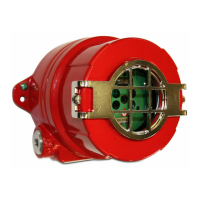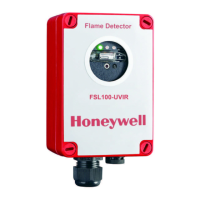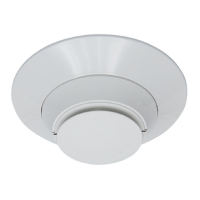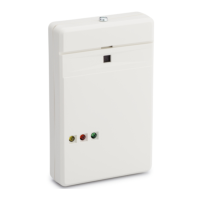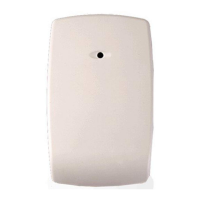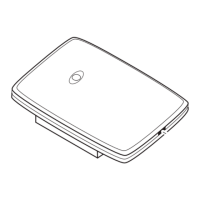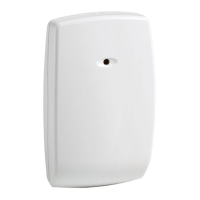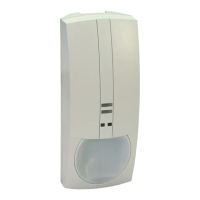Installation Guide and Operating Manual
Honeywell 16
SECTION 3: OPERATION
Figure 3.1 Principle of Operation
Honeywell Analytics’ multi-spectrum and multi-spectral infrared Fire and Flame Detectors are sophisticated,
state of the art, electro-optical digital radiant energy transducers that sense the wideband radiant energy emitted
by fire’s combustion processes that include flames’ molecular emissions and hot particulate blackbody
emissions. Radiant Energy Fire Detectors respond much faster to flames and fires at a longer distance than
other types of conventional photoelectric and ionization smoke and heat detectors because a fire’s emitted
radiant energy travels at the speed of light. Fast response is critical for detecting flaming fires in time to
successfully activate suppression or activate other fire responses such as closing fire doors. Seconds can make
the difference between suppressing a small fire with little or no damage or having a disastrous fire that
overwhelms a suppression system thereby failing to stop the fire.
Infrared (IR) consists of spectral wavelengths longer than the color red. The IR range for fire detection, which is
invisible to the human eye, is from about 700 nanometers to 7000 nanometers (0.7 to 7.0 microns). Honeywell
Analytics’ FS24X Fire Detectors utilize a NearBand IR™ portion of the spectrum from approximately 185 to 260
nanometers and a WideBand IR portion from approximately 0.7 to 3.3 microns. This allows the FS24X Detectors
to sense over 80% of the total radiant “Blackbody Energy” emitted by a fire. Honeywell Analytics’ Detectors
sense and measure the radiant energy generated by a fire at the speed of light.
FSX Detectors also utilize an additional spectral region, the Visible Band, that spans from about 400 to 700
nanometers (0.4 to 0.7 microns.) The Visible Band is used to further discriminate against non-fire false alarm
sources. The Model FS24X Detectors also sense the specific WideBand 4.3 IR™ “Triple IR”. Sensing these
hydrocarbon wavelengths does not inhibit the Detector’s ability to see non-hydrocarbon fires. Built-in
microprocessors use sophisticated Digital Signal Processing (DSP) to accurately distinguish radiant energy from
a real fire and a false alarm source(s). Honeywell Analytics has developed and refined these complex
proprietary and patented WideBand IR algorithms over the last 30 years. These patented algorithms perform
real-time DSP, and precisely analyze the signals in high-resolution frequency and time domains. This decision
making process involves thousands of real-time calculations every second. Honeywell Analytics FS24X
Detectors use solid-state high speed quantum sensors (not heat sensors such as pyroelectric or thermopile) that
all respond to the fire’s radiant energy emissions. The quantum sensors convert the rate of photonic energy
directly into analog electrical signals. These analog signals are then converted to high resolution digital bits for
real-time microprocessor analysis. The Detector microprocessors incorporate random access memory (RAM),
read-only memory (ROM), and non-volatile flash memory. When the microprocessors determine that a real fire
has been detected, the pre-alarm digital sensor data (FirePic™) and the event information are recorded in flash
memory. Depending on the configuration, other actions may include activating one or more status LEDs, relays,
a current loop and sending digital data such as the RS-485 FireBus
II, and Modbus. If the microprocessors
determine, based on internal testing and “through-the-lens” testing, that the Detector is not operating correctly, it
records the Fault data and activates the Fault outputs and the yellow status LED. The digital data in the
Detector can be easily accessed with a PC for later analysis and record keeping using Honeywell Analytics’
Windows
®
based PC software and FSIM-2 USB Interface Unit.
Figure 3.2 Configuring the Detector
IMPORTANT: Changing the Detector Settings – To activate changes to the settings using SW1, SW2 and
SW3, reset the Detector by removing and re-applying 24 VDC input power.
The Digital Address for the RS485 Communication can be set using positions 4 through 10 on SW1. Switch
positions 1, 2 & 3 for SW1 are for factory use only and should not be changed.
1 2 3 4 5 6 7 8 9 10
127
OFF OFF OFF ON ON ON ON ON ON ON
126
OFF OFF OFF ON ON ON ON ON ON OFF
125
OFF OFF OFF ON ON ON ON ON OFF ON
124
OFF OFF OFF ON ON ON ON ON OFF OFF
003
OFF OFF OFF OFF OFF OFF OFF OFF ON ON
Figure 3-1 (SW1)
Ten (10) Position DIP Switch
002
OFF OFF OFF OFF OFF OFF OFF OFF ON OFF
001
OFF OFF OFF OFF OFF OFF OFF OFF OFF ON
000
OFF OFF OFF OFF OFF OFF OFF OFF OFF OFF
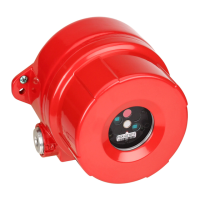
